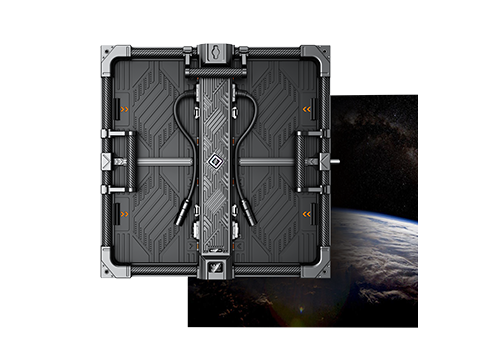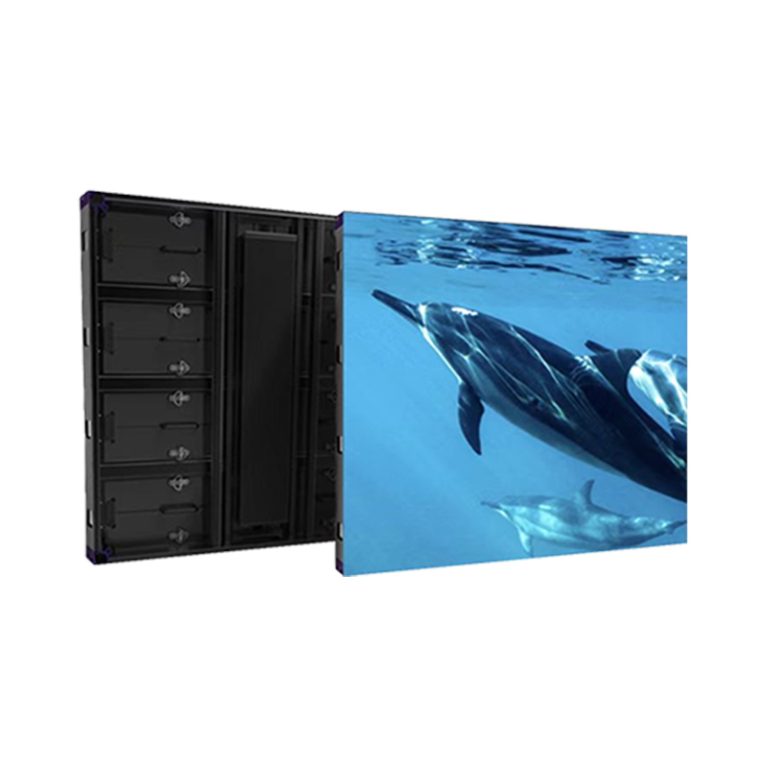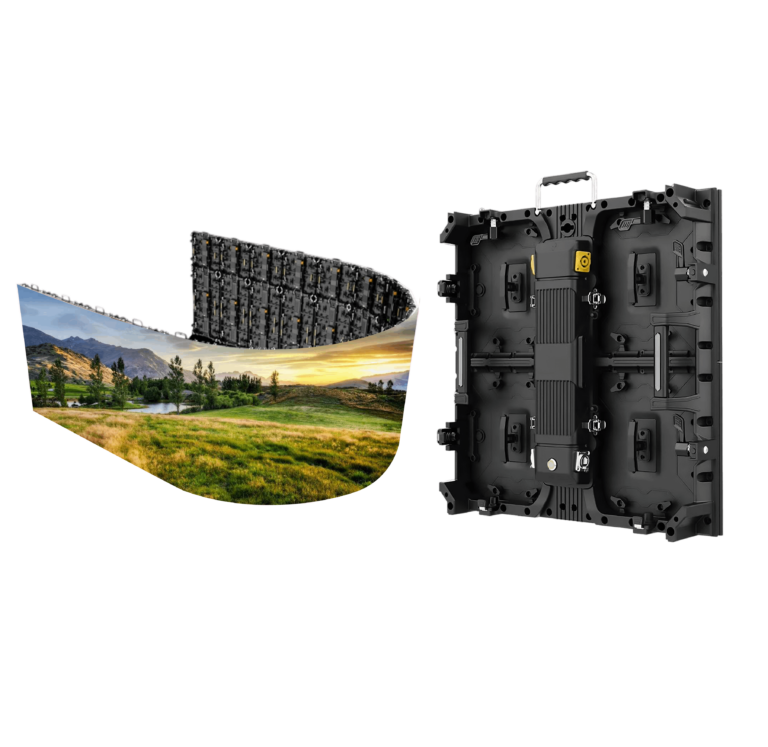Contents
-
Why Shopping Malls and Glass Facades Are Turning to LED Transparent Displays
-
Key Differences from Traditional LED Screens
-
The Five Core Parameters That Affect Transparency
-
Choosing the Right Brightness and Protection Level
-
Hidden Factors That Affect Custom LED Screen Costs
-
How to Calculate Custom Transparent LED Screen Pricing
-
The Complete Customization Process
-
Crystal Series: Core Specs & Selling Points
-
Real-World Case: Revolutionizing Shopping Window Displays
-
Top FAQs
-
Conclusion
Hey marketers and architects! Have you noticed that high-end shopping malls, concert stages, and modern glass buildings are all being transformed by an “invisible” display technology? That’s the LED transparent screen.
According to Mordor Intelligence’s 2024 report, the global transparent LED display market has reached USD 1.87 billion and is projected to grow at a compound annual rate of 27.3% from 2025 to 2030. Yet, many businesses still run into problems—insufficient transparency, low brightness after installation, or budgets exceeding expectations by more than 30%.
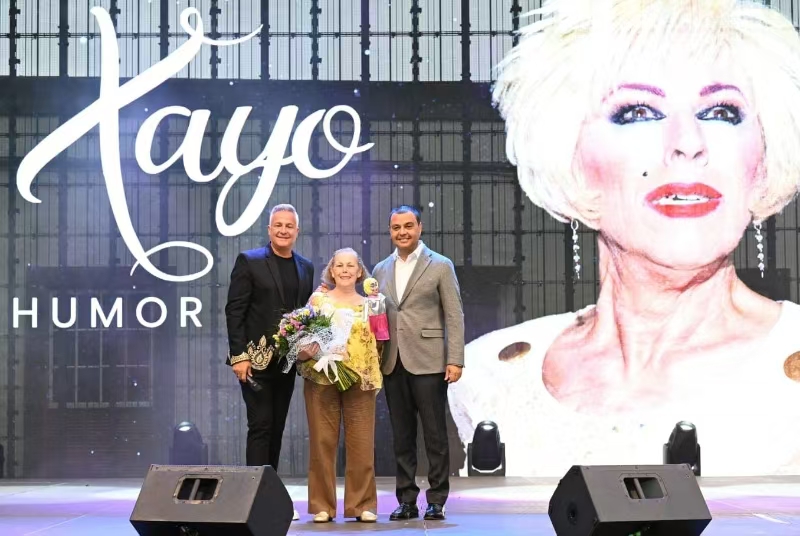
While traditional LED screens are visually striking, they often block light and ruin architectural aesthetics. Transparent LED screens solve that contradiction perfectly—delivering vivid visuals without hiding what’s behind.
This guide will help you navigate every step of customizing a transparent LED screen—from understanding the technology differences to evaluating cost, brightness, and installation. By the end, you’ll be able to plan and execute a high-impact, high-ROI LED project like an industry expert.
1. Why Malls, Stages, and Glass Buildings Use LED Transparent Screens
The commercial adoption of transparent LED screens is booming. According to Market Research Future, the transparent display market is expected to reach USD 12.8 billion by 2030, growing over 27% annually.
Key reasons:
-
Strong visual impact: High brightness even under sunlight, drawing attention instantly.
-
Unobstructed visibility: Keeps interior transparency even when installed behind glass.
-
Energy efficiency: Consumes 30–40% less power than traditional LED screens.
-
Lightweight installation: About half the weight of standard LED panels, ideal for retrofit projects.
-
Enhanced brand image: Combines modern technology with architectural design aesthetics.
2. Transparent vs. Traditional LED Displays: More Than “Lighter and Clearer”
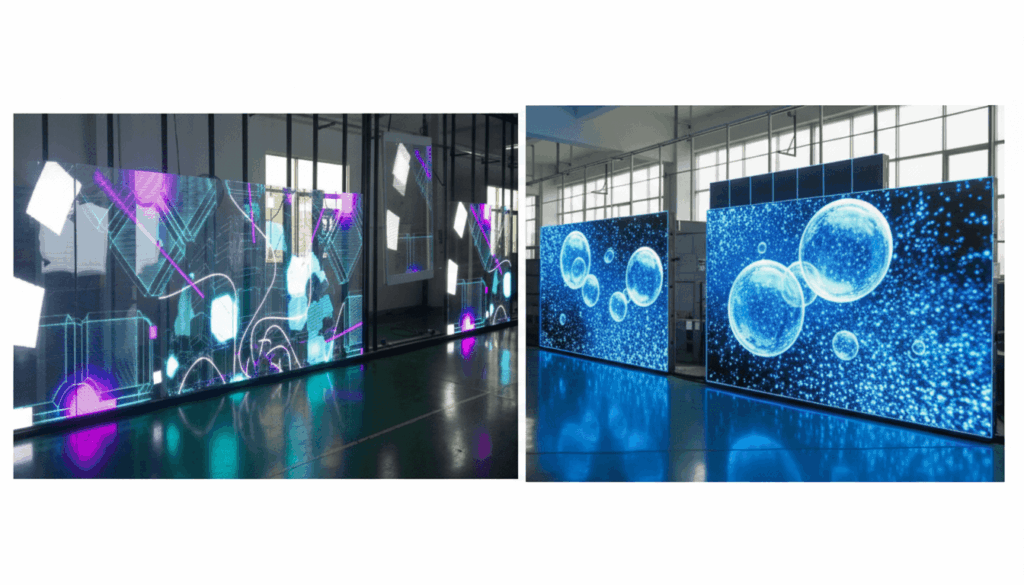
| Feature | Transparent LED Screen | Traditional LED Screen |
|---|---|---|
| Brightness | 1000–5500 nits | 800–7000 nits |
| Transparency | 60%–90% | 0% |
| Power Consumption | 350–600 W/m² | 600–800 W/m² |
| Structure | Lightweight, no steel frame | Heavy, needs rigid frame |
| Installation | Inside glass façade or window | Wall or standalone |
| Visual Effect | Floating visuals | Solid display effect |
3. Five Core Parameters That Determine Transparency
Transparency isn’t a single metric—it’s the result of five interdependent factors:
1. Pixel Pitch (Light Bar Width & Spacing):
Smaller pitch = higher clarity but lower transparency. For example, P3.9 achieves ~75% transparency, while P1.8 can reach 90%. Choose based on viewing distance and light requirements.
2. LED Package Type (SMD vs. COB):
-
SMD: Lower cost, higher brightness, widely used today.
-
COB: Smaller package size, better waterproofing and durability, ideal for next-gen fine-pitch transparent screens.
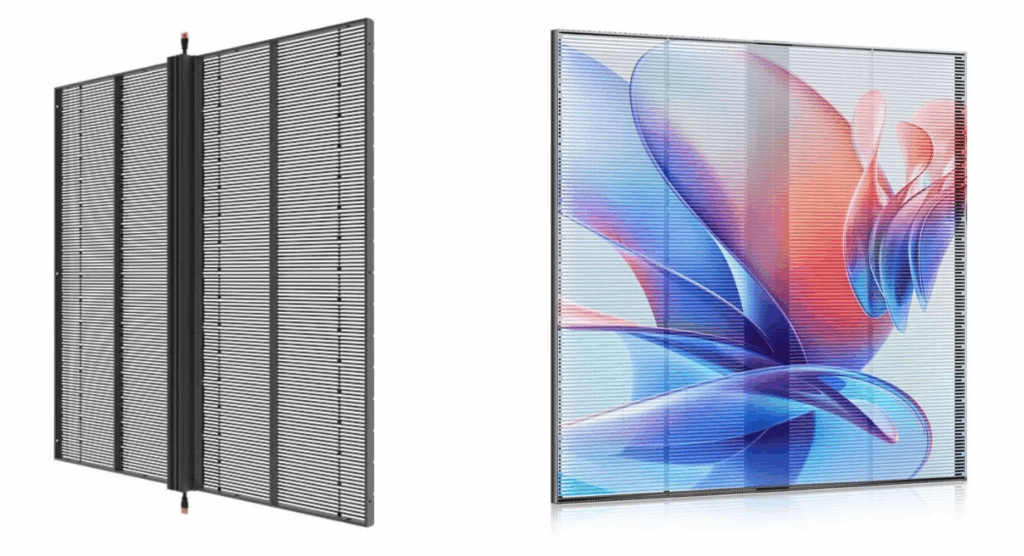
3. Refresh Rate (Driver IC):
High-end displays should have ≥3840Hz, ensuring flicker-free performance during photography and enhancing premium presentation quality.
4. Frame Material & Thickness:
Lightweight aluminum is preferred. A thinner frame (≤5 cm) minimizes visual presence, improving transparency.
5. Power & Cable Design:
Professional customization hides power boxes and wiring for a cleaner, nearly invisible appearance.
4. Choosing the Right Brightness & IP Protection Rating
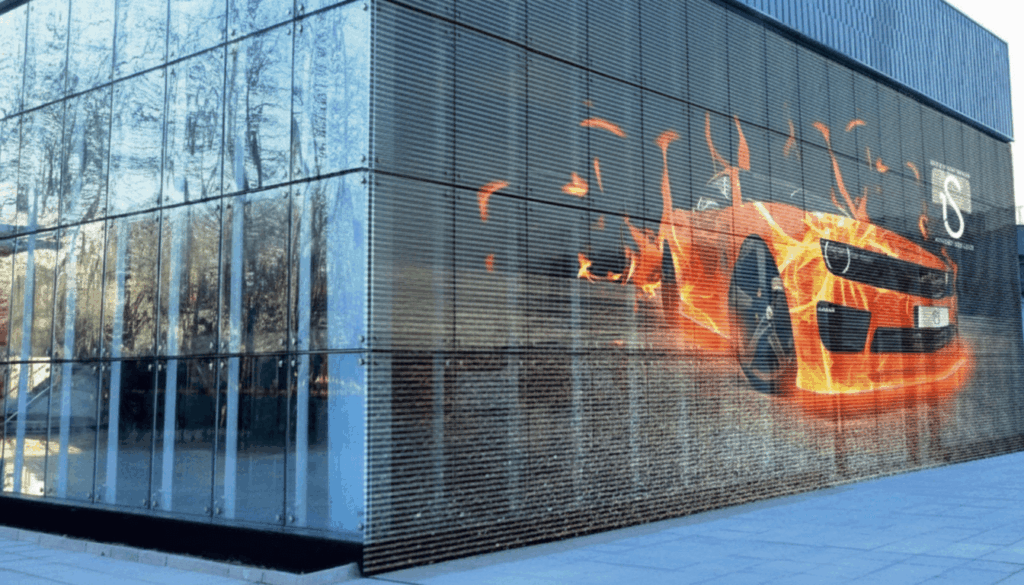
| Application | Recommended Brightness | IP Rating | Key Considerations |
|---|---|---|---|
| Indoor window/display | 1500–3000 nits | IP31 | Too bright may cause glare; smaller pixel pitch preferred |
| Semi-outdoor (canopy covered) | 3500–5000 nits | IP43 | Sunlight exposure without full waterproofing |
| Outdoor glass façade | 5500–7000 nits | IP65 | Must handle direct sunlight, rain, and dust |
Pro Tips:
-
For south-facing façades, choose ≥5000 nits brightness.
-
Reduce brightness for nighttime or shaded areas to save energy.
-
Higher IP = higher cost but longer lifespan (up to 100,000 hours).
5. Hidden Factors That Affect Custom Screen Cost
Custom shapes and curved structures:
Round, wave, or L-shaped designs may increase cost by 20–50%. Stick to standard modules when possible.
Installation complexity (height, safety):
For installations above 10 meters, crane rental, labor insurance, and safety measures can add 10–15% to project costs.
Control systems and content production:
Multi-screen synchronization or 3D rendering projects require advanced systems and processors.
High-end 3D video content can cost $3,000+ per 10 seconds.
Brand and warranty:
Top brands (Absen, SoStron, Leyard) may cost 15–30% more but offer 3+ year warranties and better reliability.
6. How to Calculate Transparent LED Screen Price
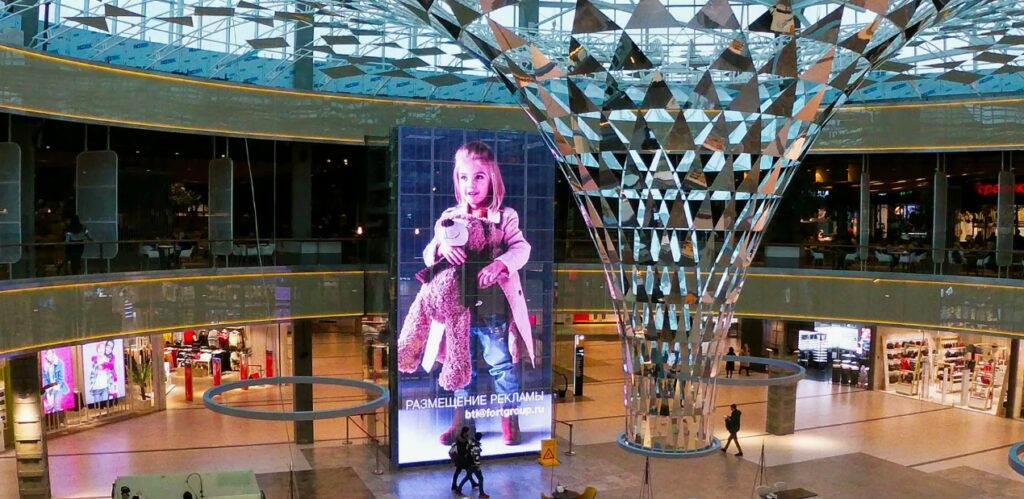
Average pricing:
-
Indoor: $800–$1,200 per m²
-
Outdoor: $1,200–$1,800 per m²
Formula:
Total Cost = (Area × Unit Price) + Control System + Installation + Shipping
Example:
A 10m² mall display at $1,000/m² ≈ $12,500 total (including system and installation).
7. Full Customization Process
-
Requirement Discussion: Define purpose, dimensions, viewing distance, and lighting.
-
Technical Proposal: Choose pixel pitch, brightness, and IP rating.
-
3D Rendering: Simulate actual installation appearance.
-
Production: Module soldering, testing, and aging process.
-
Shipping & Installation: Use shockproof packaging and professional installers.
-
Calibration & Training: Adjust color temperature and synchronization.
-
After-Sales Service: Regular cleaning and humidity control for longevity.
8. SoStron “Crystal” Transparent Screen: Core Specs & Highlights
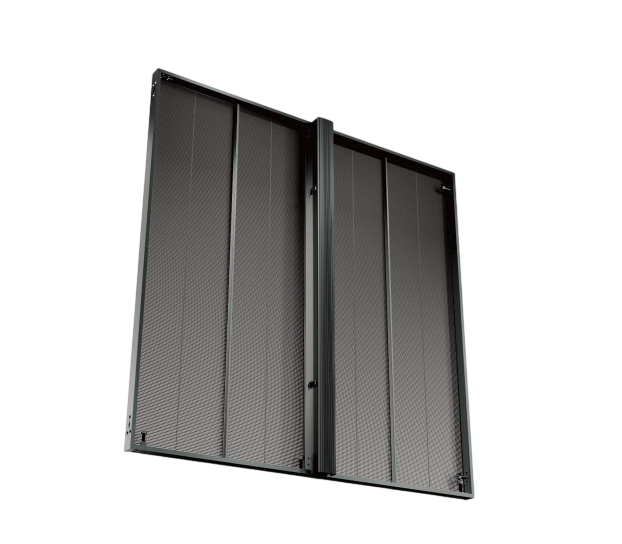
| Parameter | SoStron Crystal | Notes |
|---|---|---|
| Pixel Pitch | 2.8 / 3.91 / 5.2 mm | Different resolutions for varied needs |
| Transparency | Up to 75% | GOB nano-material technology |
| Max Brightness | 1,500 cd/m² | Ideal for indoor and glass environments |
| Protection | IP65 | Suitable for semi-outdoor use |
| Avg. Power | 150 W/m² | Peak 400 W/m² |
| Weight | ~12.5 kg/m² | 60 mm depth aluminum body |
| Maintenance | Front & rear access | Flexible servicing |
| Usage | Fixed or rental | Ideal for retail or exhibitions |
Selling Points:
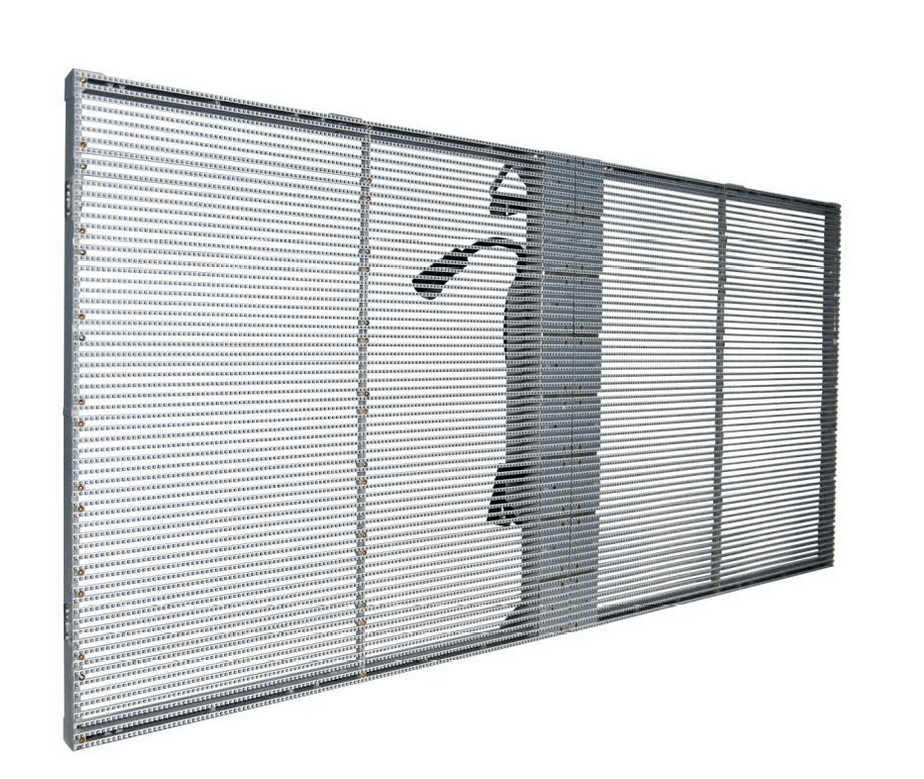
-
Excellent transparency with vivid display quality.
-
Multiple pixel pitches for different budgets.
-
Durable and waterproof design.
-
Dual maintenance access.
-
Supports both fixed and rental installations.
9. Case Study: 24/7 Immersive Shopping Window Experience
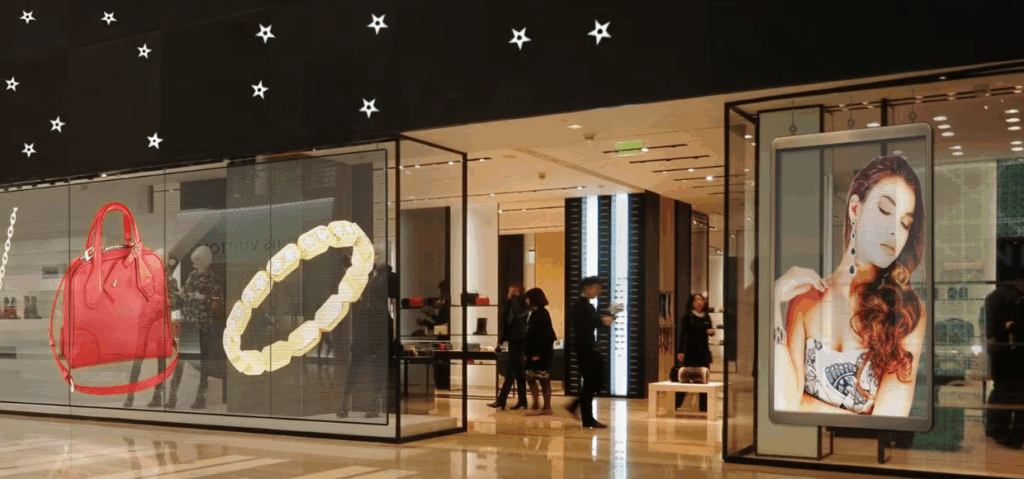
Problem:
Traditional LCD screens lack brightness; static posters don’t grab attention.
Solution:
Installed an 8m² P3.9 transparent LED at 5000 nits brightness and 75% transparency.
Daytime: high-contrast product videos; Night: 3D floating jewelry animations.
Results:
-
Average viewing time increased by 40%.
-
QR code scans for online engagement rose by 25%.
Tip:
Use dark or solid-colored backgrounds inside the window to enhance display contrast and depth.
10. FAQs
Q1: What’s the lifespan of a transparent LED screen?
A1: Typically 50,000–100,000 hours, or 5–8 years with 10 hours/day usage.
Q2: Is maintenance expensive?
A2: Not at all. Modular light bars are easy to replace from the inside, with simple cleaning using soft, lint-free cloths.
Q3: Is a smaller pixel pitch always better?
A3: Not necessarily. Smaller pitch = higher cost & lower transparency. Choose based on viewing distance (e.g., P10 for 6m distance).
Q4: Can transparent LED screens play 3D content?
A4: Absolutely. They’re ideal for naked-eye 3D effects—just pair with high-end processors and 3D content, no glasses required.
Q5: Are transparent screens hard to maintain?
A5: Easy. Modular design allows single-bar replacement without full disassembly.
11. Conclusion
Transparent LED screens are redefining modern visual design—balancing brightness, visibility, and architectural aesthetics.
From pixel pitch to IP rating, every detail matters for performance and cost efficiency.
As transparent display tech evolves, expect integrations with AR, smart control, and energy-saving systems.
Now the real question is: how will you leverage 75–95% transparency to create your next immersive retail or architectural experience?
Sources:

